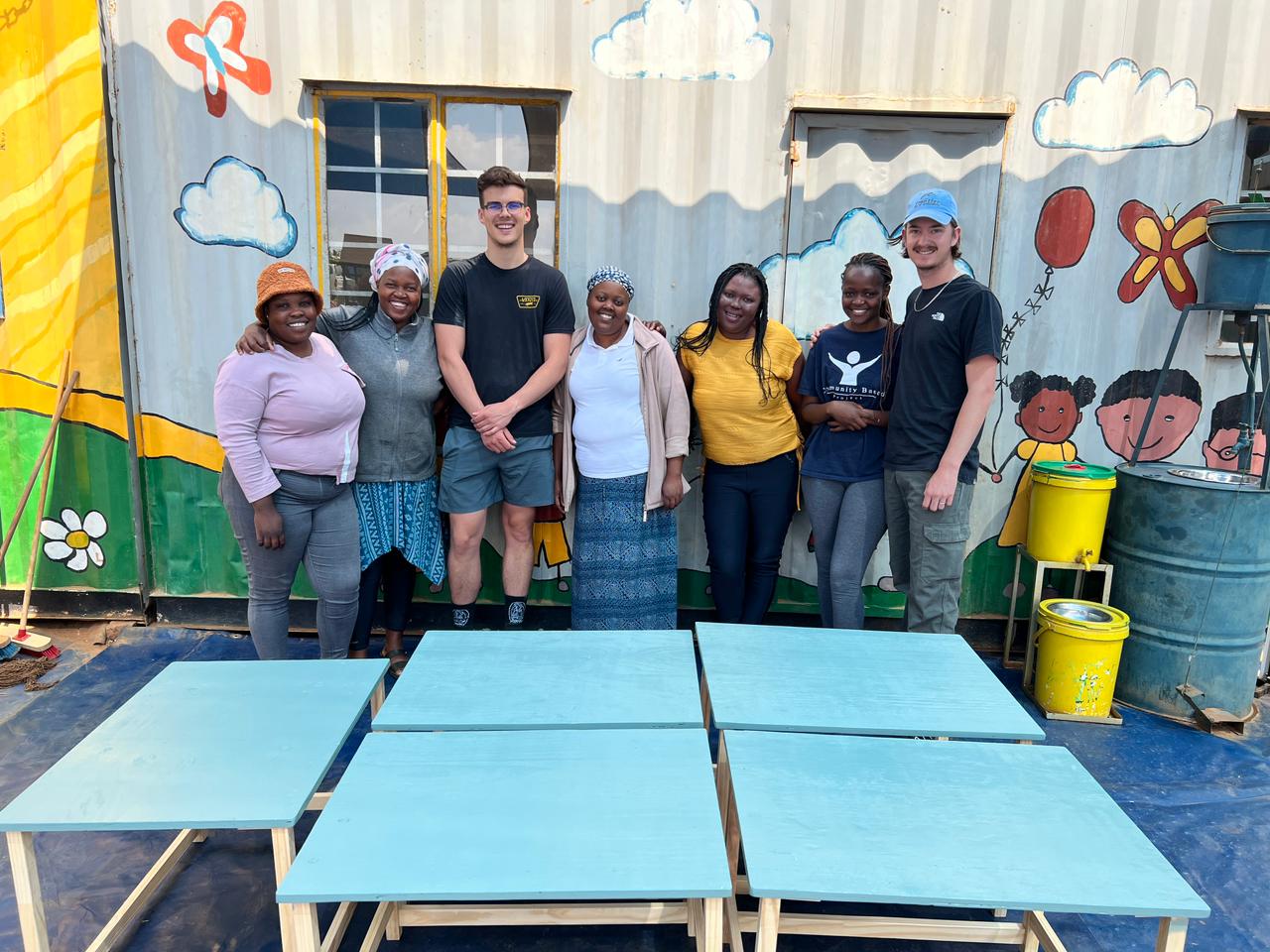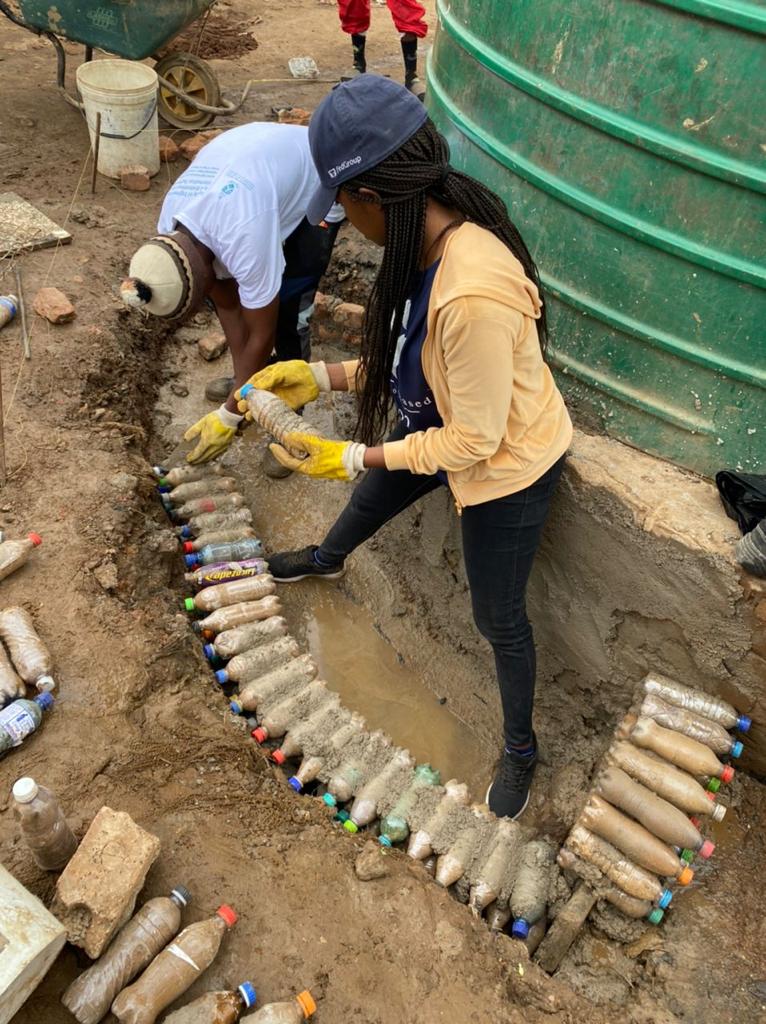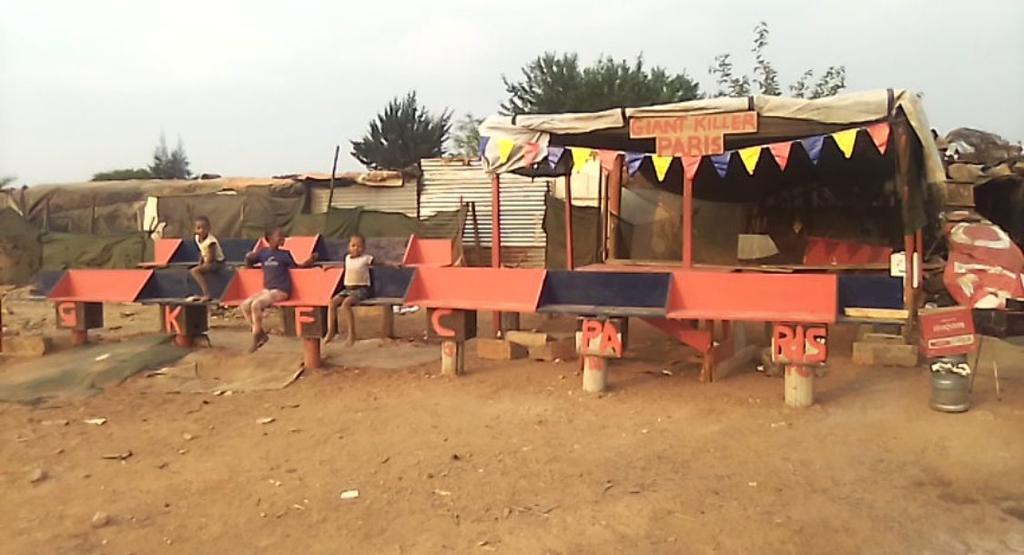Dr Carin Combrinck (Senior Lecturer • Director: Unit for Urban Citizenship - Department of Architecture)
A few timber benches, small tables and a trench around a water tank may seem like small projects, but they were made with much love by groups of dedicated undergraduate students with limited resources. What cannot be seen at first glance are the complex processes, networks and tacit learning experiences that form part of these intersectional moments of emergence.
The people residing in the informal settlement of Plastic View in Moreleta Park face daily struggles of basic survival, poor sanitation, inadequate water and extreme socio-economic strain. Over several years, they have generously collaborated with students in the honours and master’s programmes in the Department of Architecture’s Unit for Urban Citizenship (UUC). Through their eyes and through their stories, the UUC has been able to develop an understanding of the hopes, dreams and aspirations of young men and women from all over the African continent in search of better opportunities. This universal desire for making a place of your own is the stuff of dreams, which is what architects are best at. Our students have had the opportunity to learn, to listen and to make sense of what Plastic View could become. They have developed community action plans, urban visions and diverse proposals for amenities that range from schools to markets and various housing options.

Early Childhood Development Tables
During 2021 and 2022 we were also able to host master’s students in architecture from Chalmers University of Technology in Sweden, first online (2021) and then in person (2022). They joined us in gaining an ever-deepening understanding of the nuanced layers of needs and aspirations in the settlement, and from these interactions increasingly diverse suggestions for spatial and systemic interventions were developed.

Upgrade the water tank
Despite the potential that we have recognised for the implementation of in-situ upgrade strategies in Plastic View, it has become clear over this time that the tensions that exist between government authorities, non-profit organisations (NPOs), surrounding residential estates and the community of Plastic View will not be resolved any time soon. The stalemate that exists regarding local and national government’s position regarding economic migrants without South African citizenship has resulted in a lost generation—children growing up playing in raw sewerage, living in inadequate housing, seeing their parents’ dreams evaporating in the smoke of burning plastic.

Soccer benches
It is in the context of this humanitarian crisis developing on our doorstep that UUC students have identified the need to conceptualise projects and potential interventions that address the immediate and pressing needs associated with disaster relief. Through recognising that Plastic View has much in common with refugee camps housing populations displaced by economic distress, the focus has shifted to developing action plans and micro-scale interventions that can be implemented NOW, improved upon SOON and formalised LATER.
An integrated curriculum approach was followed where post-graduate (honours and master’s) and undergraduate (second-year JCP203 in the Faculty of Engineering, Built Environment & Information Technology) students collaborated with community members in Plastic View to identify three main focus areas, namely early childhood development (ECD), water and sports as drivers of social cohesion and community galvanisation. Students were able to identify how micro-scale interventions may serve to address immediate needs in each of these areas while simultaneously creating a platform to support systemic development.
The ECD facility in Plastic View, which currently consists of shipping containers and is managed by the NPO SA Cares for Life, provides a ray of hope in the settlement. A co-design studio with honours and JCP students revealed possibilities for the future expansion of the ECD to make it a mixed-use node supporting education and trade. At the immediate scale, however, the ECD is under-served and has a need for robust furniture for their day-to-day functions. Two JCP203 groups collaborated, pooling their budgets to create strong and ergonomically appropriate tables for the children.
The water tanks that are situated throughout the settlement are refilled by the City of Tshwane and serve as important social gathering points, bearing the core qualities of public space and the beginnings of urban life. Since much water is spilled when collecting with buckets, the community leadership requested a micro-scale intervention that would serve as a demonstration of how the excess water could be captured and re-used for urban agriculture. The co-design process resulted in a trench lined with plastic bottles filled with dirt (‘eco-bricks’) that would be big enough to accommodate a bucket. Through this small intervention, residents are able to continue using inherited agricultural skills to produce their own food and galvanise the community spirit around the central gathering point—the water tank—thereby improving communication and network power in the settlement.
The students were tremendously inspired by the energy of the sports enthusiasts in Plastic View, especially the soccer teams who are active on Sundays, with various teams battling it out on the dusty sports field on one side of the settlement. Research conducted over several years has shown that netball and soccer players have become increasingly respected in the community, with events that included teams from elsewhere in Pretoria visiting Plastic View for mini-tournaments. Short gum poles had been inserted around the field by the soccer teams to demarcate the area and students in the urban citizen studios realised that these could form the support structures for spectator benches and rudimentary pavilions. Through collaboration with the York Timber research chair, some materials were donated and Computer Numerical Control (CNC) cut according to the designs that had been developed collaboratively by honours and JCP students, and the community leaders involved in sport. The JCP teams then completed the project by combining the timber benches with beer crates for stability and incorporating the community members in the final installation. By the time the students were done, soccer players were already busy painting and personalising these mini-pavilions to represent their teams.
Through this focus on three aspects of community cohesion in the settlement: ECD, water/ public space and sports, the collaboration between various student groups and the community of Plastic View has resulted in small seeds of change being established that promise to bring about meaningful progress over time.



Get Social With Us
Download the UP Mobile App